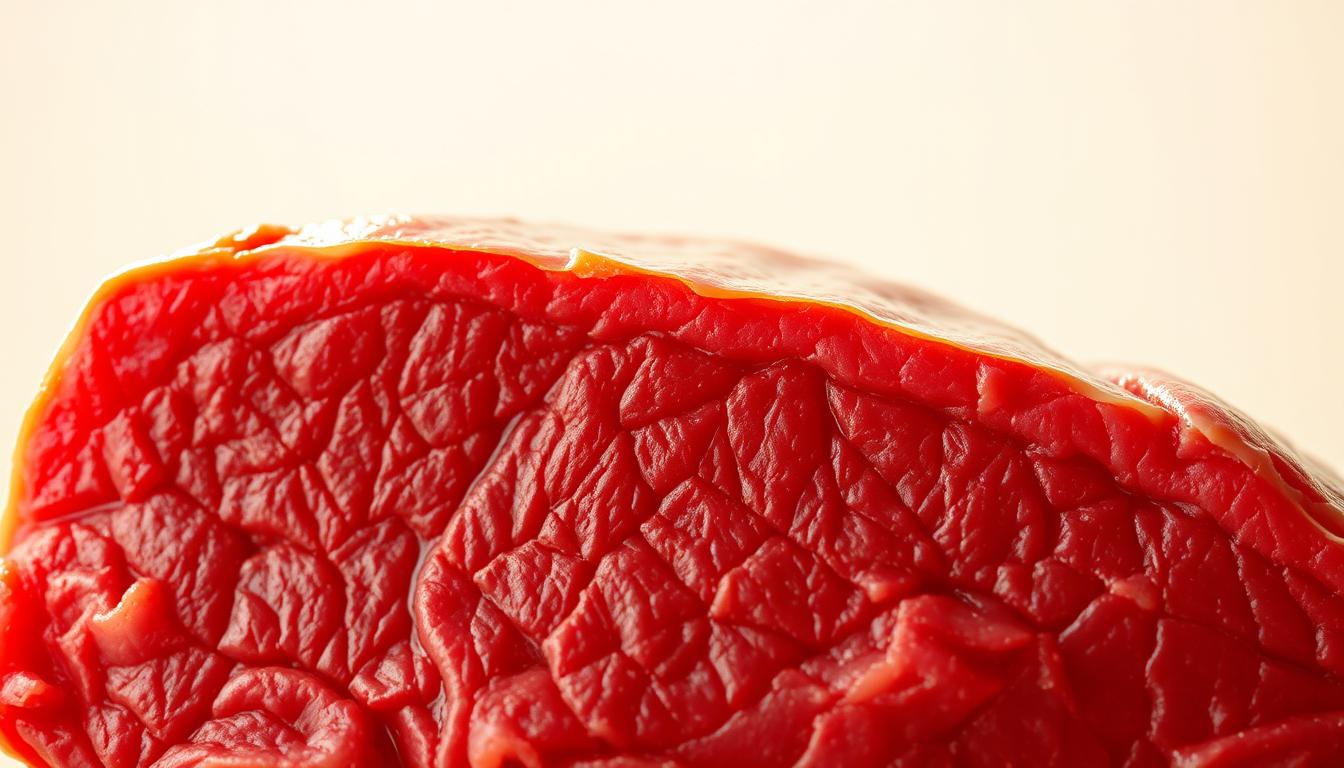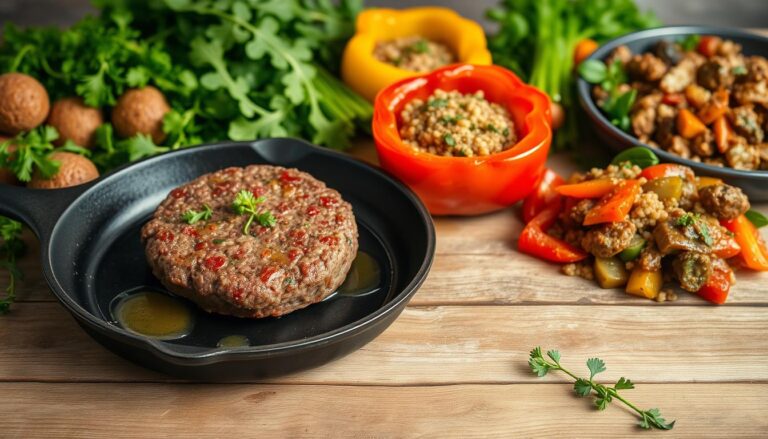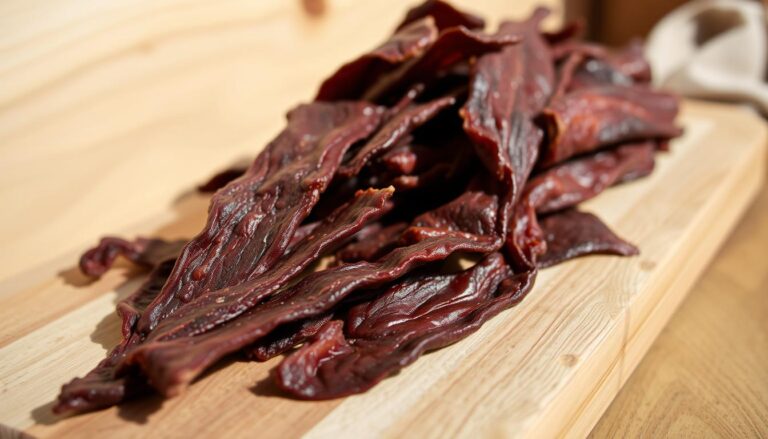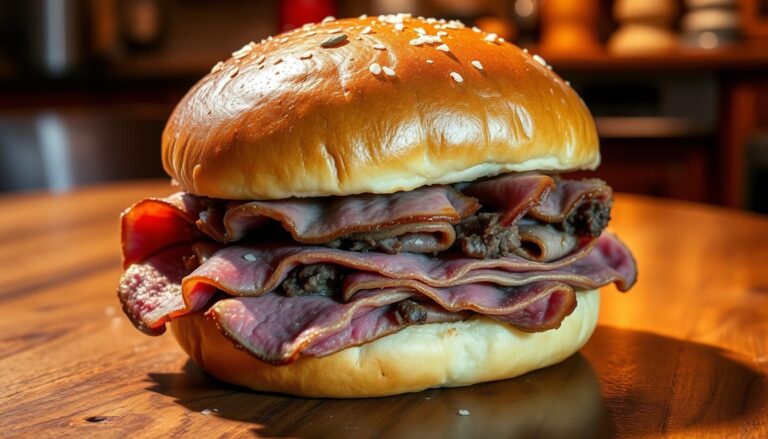Is Beef Liver Good for You? Nutrition Facts Inside
Ever wonder why organ meats like beef liver have been prized for centuries? Packed with essential nutrients, this superfood delivers a powerhouse of vitamins and minerals in every bite. Though its strong flavor divides opinions, the health benefits make it worth considering.
A 3-ounce serving covers your daily vitamin A needs and offers a hefty dose of iron and protein. Unlike muscle meats, it’s low in calories but rich in nutrients like B vitamins and copper. Yet, moderation matters—consuming it once a week balances benefits without overloading certain vitamins.
Cultural diets worldwide include organ meats for their dense nutrition. Whether you’re exploring ancestral eating or optimizing your diet, understanding its role helps you decide. Let’s break down the facts.
Table of Contents
Is Beef Liver Good for You? Nutrition Facts Inside
Key Takeaways
- Packed with iron, protein, and vitamin A in small servings
- Supports energy levels and immune function
- Best consumed in moderation—1 serving weekly
- Strong flavor may require creative recipes
- Nutrient profile surpasses typical muscle meats
What Is Beef Liver?
Not all cuts of meat pack the same nutritional punch. Beef liver comes from cows over one year old and serves as their filtration system. This vital organ removes toxins from blood and produces bile, aiding digestion in animals.
Younger alternatives like calf liver (from cows under one year) taste milder and softer. Compared to chicken or pork liver, the beef variety has a stronger flavor and denser texture. Some describe it as earthy or metallic—love it or hate it.
In the U.S., dishes like liver and onions showcase its cultural roots. You’ll find it at butcher shops or supermarkets, often next to other organ meats. Cooking methods can tame its boldness, making it a versatile ingredient.
Beef Liver Nutrition: A Powerhouse of Nutrients
Few foods deliver as much nutrition per bite as this underrated superfood. A standard 3-ounce serving packs 149 calories yet floods your body with 23 grams of protein and 4mg of iron. It’s a prime example of quality over quantity.
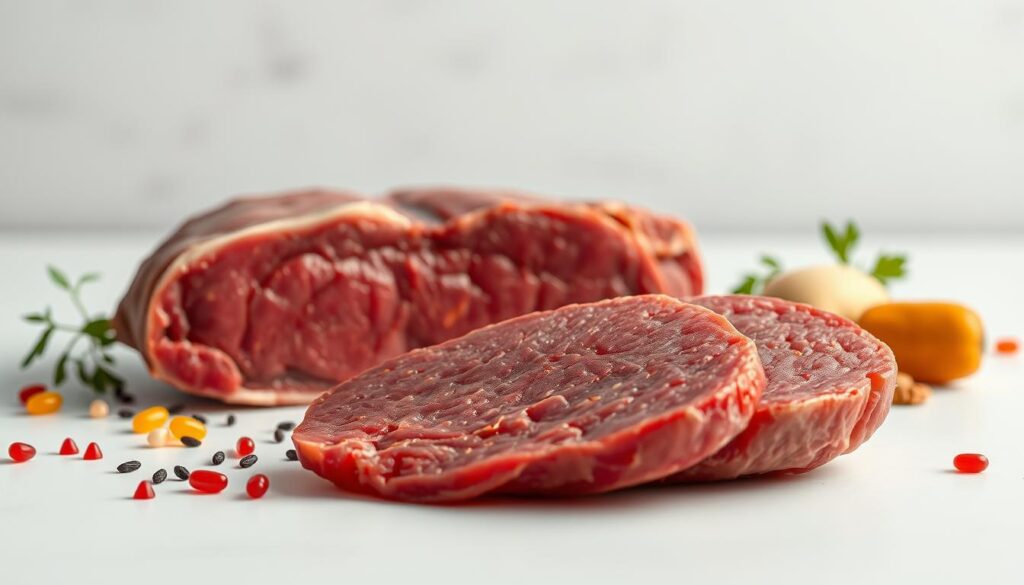
Protein and Iron Content
Every bite delivers a complete protein, meaning all nine essential amino acids are present. These building blocks repair tissues and support muscle growth. The 4mg of iron per serving fights fatigue and anemia—especially for those with deficiencies.
Compared to spinach (2.7mg iron per 100g), it’s far more bioavailable. Your body absorbs heme iron from animal sources 2–3 times faster than plant-based alternatives.
Vitamins and Minerals
This food overwhelms daily needs for vitamins minerals like B12 (1,300% DV) and copper (1,400% DV). Riboflavin and folate boost energy metabolism, while vitamin A sharpens vision and immunity.
Moderation matters: Excess vitamin A can cause toxicity. Stick to one serving weekly to avoid overload. Zinc and phosphorus round out its profile, aiding wound healing and bone strength.
For plant-based eaters, matching this nutrient density would require combining lentils, nuts, and leafy greens—a less efficient approach.
Health Benefits of Beef Liver
Modern science confirms what traditional diets always knew. Packed with essential vitamins and minerals, this superfood delivers measurable health benefits for your body’s critical systems. From immunity to cognitive function, its nutrients work synergistically.
Supports Immune and Nervous Systems
Vitamin B12 takes center stage, with 59mcg per 3-ounce serving. This powerhouse nutrient fuels energy production and protects nerve cells. Low levels may lead to fatigue or memory fog.
Vitamin A bolsters your immune system by strengthening mucous barriers. These block pathogens before they enter your bloodstream. Zinc further amplifies defenses, aiding white blood cell function.
Promotes Bone and Blood Health
Iron and B12 team up to prevent anemia, ensuring oxygen reaches every cell. Hemoglobin production relies on this duo, especially for active individuals or those with deficiencies.
Vitamin K directs calcium to bones, not arteries. This mineral synergy enhances density, reducing fracture risks over time. Historical diets used it to treat brittle bones.
| Nutrient | Role | % Daily Value (3oz) |
|---|---|---|
| Vitamin B12 | Nerve function, energy | 1,300% |
| Vitamin A | Immunity, vision | 500% |
| Iron | Blood oxygenation | 22% |
| Vitamin K | Bone metabolism | 60% |
For weight management, its high protein content keeps you full longer. Unlike empty calories, it satisfies hunger while nourishing your brain and body.
Potential Risks and Drawbacks
While packed with nutrients, this superfood comes with cautions worth noting. Overconsumption may lead to imbalances, especially with fat-soluble vitamins and minerals. Smart portions let you reap benefits without crossing into risky territory.
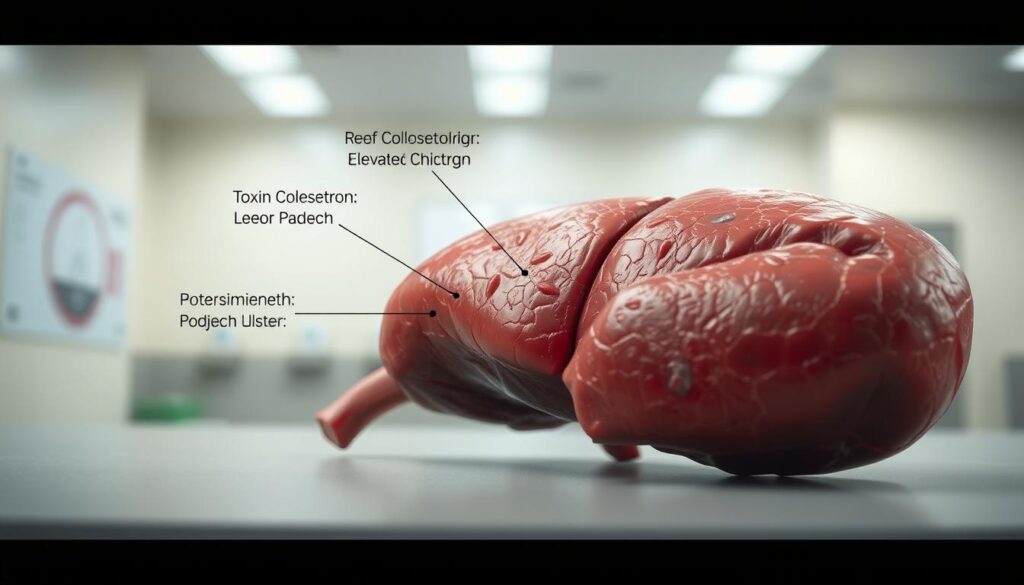
Vitamin A and Copper Toxicity
A 3-ounce serving delivers 12,400mcg copper—1,300% of daily needs. Over time, excess copper can accumulate, harming those with Wilson’s disease. Symptoms include nausea and liver damage.
Similarly, vitamin A overload may cause dizziness or bone pain. Pregnant women should limit intake to avoid birth defects. Stick to one serving weekly to keep levels safe.
Cholesterol and Purine Concerns
With 310mg cholesterol per serving, those with heart conditions should monitor intake. Dietary guidelines suggest under 300mg daily for healthy adults.
High purines (260–400mg/100g) convert to uric acid, potentially triggering gout flare-ups. If you’re prone to gout, balance portions with low-purine foods.
Non-organic options might contain antibiotic residues. Opt for grass-fed, pasture-raised sources to minimize this risk. Always consult a doctor if you have metabolic conditions.
Beef Liver vs. Other Types of Liver
From chicken to cod, liver options differ in texture, cost, and health perks. While beef liver dominates for iron and B12, alternatives like chicken or cod livers cater to milder palates or specific dietary needs.
Chicken liver offers a gentler flavor with 18.8mcg B12 per 4oz—ideal for beginners. Its creamy texture blends well into pâtés or fried dishes. Cod liver, though higher in fat (21g/2oz), delivers omega-3s for heart health.
Grass-fed beef liver stands out with 4x more phytonutrients than grain-fed. Antioxidants like CoQ10 support energy production, making it a premium source for active lifestyles.
- Taste & Texture: Beef—earthy/metallic; chicken—mild/creamy; cod—rich/oily.
- Nutrition: Beef wins for iron/B12; cod for omega-3s; chicken for affordability.
- Cultural Favorites: Foie gras (duck) vs. chopped liver (chicken) in global cuisines.
For recipes, substitute chicken liver in pâtés or use cod liver oil for a nutrients boost. Grass-fed beef liver remains the top pick for density, but variety ensures balanced organ meats intake.
How to Prepare and Cook Beef Liver
Mastering the art of cooking this nutrient-dense organ meat unlocks its full potential. With the right techniques, you can soften its bold flavor and create dishes even skeptics will enjoy. Whether pan-fried or blended into recipes, preparation matters.
Soaking and Marinating Tips
Soak slices in milk for 1–2 hours before cooking. The casein proteins bind to bitter compounds, mellowing the taste. For a tangy twist, use lemon juice or vinegar marinades. Pat dry thoroughly to ensure a perfect sear.
Key steps for tenderness:
- Trim connective tissue for smoother texture.
- Slice thinly (¼ inch) against the grain.
- Season generously—salt, pepper, and garlic balance earthiness.
Popular Recipes
Classic liver and onions never disappoint. Caramelize the onions first, then cook the meat quickly over medium-high heat. Aim for an internal temperature of 160°F (USDA guideline) to ensure safety without overcooking.
Modern twists to try:
- Blend into ground meat for burgers or meatballs.
- Stir-fry with ginger and soy sauce for an umami kick.
- Bake into pâté with herbs for a gourmet spread.
“The secret to great liver? High heat, short time—just enough to pink the center.”
For those averse to the flavor, capsules or powders offer concentrated nutrients. But with creative recipes, you might just become a convert.
Conclusion
Nutrient-packed and budget-friendly, this organ meat deserves a spot in balanced diets. Its unmatched health benefits—like iron and B12 density—outshine muscle meats. Yet, stick to 100–250g weekly to avoid overload.
Consult a doctor if you have metabolic concerns. As a cost-effective source of nutrients, it’s worth trying in pâtés or stir-fries. The verdict? Enjoy mindfully for maximum gains.
FAQ
What nutrients does beef liver provide?
Can eating beef liver improve energy levels?
Is beef liver high in cholesterol?
How does beef liver compare to chicken liver?
What’s the best way to reduce the strong flavor?
Can you consume too much beef liver?
Does cooking affect its nutritional value?
Who should avoid beef liver?
For more cooking tips, stay connected with us. We also recommend the cookbook Skinnytaste Simple: Easy, Healthy Recipes with 7 Ingredients or Fewer
For more Recipes about Beef?
Did You try our recipe ?
There are no reviews yet. Be the first one to write one.
